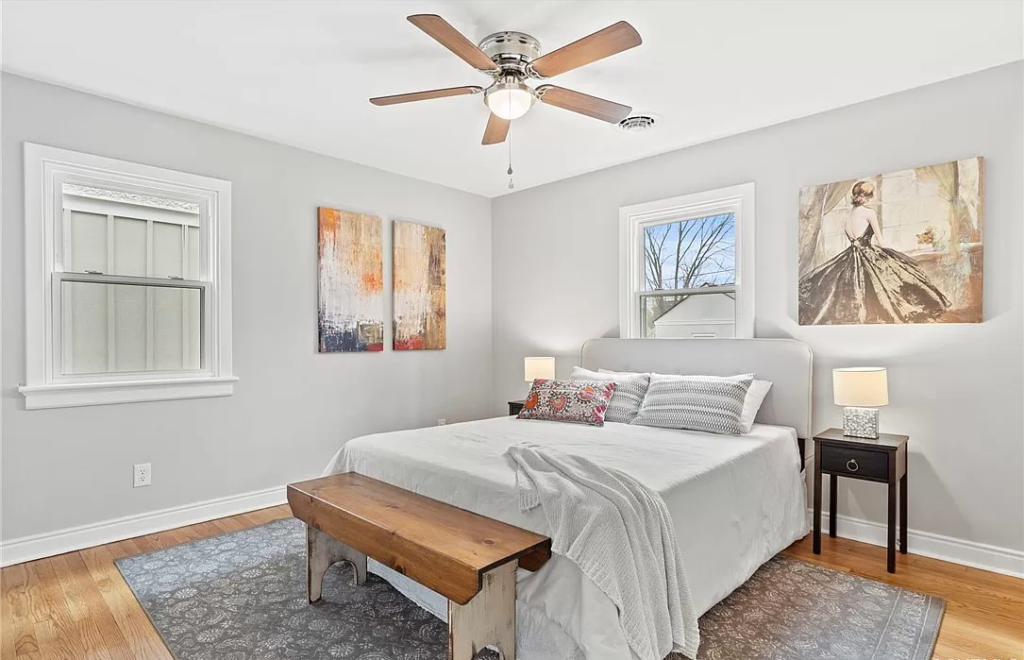Staging an occupied home can be challenging, but it’s also a powerful way to attract buyers without requiring a full move-out. By keeping your space clean, organized, and visually appealing, you allow buyers to focus on the home’s features rather than personal belongings. Here are some essential occupied home staging tips to help you create a clutter-free, inviting environment that showcases your property’s potential.
1. Start with Decluttering Essentials
The first and most impactful step in staging an occupied home is decluttering. By minimizing personal items, you create a neutral space that allows buyers to visualize their own lives in the home. Begin by clearing countertops, closets, and open shelving. Pack away non-essential items like seasonal clothing, personal photos, and collectibles. Aim to create as much open space as possible to make each room feel larger and more organized.
2. Use Multi-Functional Furniture to Maximize Space
Occupied homes often have more furniture than is necessary for staging. To make rooms feel larger and less crowded, consider removing bulky or non-essential pieces. Multi-functional furniture, such as storage ottomans or benches, can be especially helpful in keeping items out of sight while maintaining a stylish look. If your living room feels cramped, try removing large side tables or even a second sofa to improve flow and highlight the space’s best features.
Dila Design’s team of home staging experts can help you identify and rearrange furniture to create a streamlined look that feels spacious and welcoming. Our occupied home staging services ensure each room flows smoothly and appeals to a wide range of buyers.
3. Prioritize Neutral and Simple Decor
Another important occupied home staging tip is to use neutral décor to create a calm, universally appealing atmosphere. Opt for soft, neutral color schemes, especially in accessories like pillows, throws, and rugs. This helps create a clean, cohesive look and allows buyers to imagine their own belongings in the space. Avoid bold patterns or personalized decor, as these can detract from the home’s appeal and make it feel too “lived-in.”
For our interior staging services, we use subtle decor elements to transform spaces while maintaining a lived-in feel. Our goal is to highlight the home’s best features without overwhelming the buyer with personal style.

4. Stage Key Areas with Intent
Some areas of the home, like the kitchen, living room, and master bedroom, deserve extra attention when staging. These are typically the spaces that buyers focus on most, so ensure they’re staged to look their best. In the kitchen, keep counters clear except for a few decorative items, like a bowl of fresh fruit or a vase of flowers. In the living room, arrange seating to create a welcoming atmosphere and keep the area tidy. For the master bedroom, use neutral bedding and minimal decor to create a calm, inviting retreat.
5. Make the Most of Lighting and Scents
Good lighting can make a huge difference in how buyers perceive a home. Open blinds or curtains to let in natural light, and consider adding extra lamps in darker areas. In the evening, use soft, warm lighting to create a cozy atmosphere. Additionally, keep the air fresh with light, pleasant scents. Avoid overpowering air fresheners, and instead use subtle options like fresh flowers, citrus, or linen-scented candles.
How Dila Design Can Help
Staging an occupied home requires a balance of organization, creativity, and restraint, and that’s exactly what our home stagers bring to the table. We provide professional guidance to help homeowners stage their lived-in spaces effectively, using practical occupied home staging strategies that make a property shine. With our expertise, your home can look its best without requiring a complete overhaul, giving buyers a clear vision of its potential.
If you’re preparing to sell your home, contact Dila Design today. Our home staging services in Richmond, VA transform lived-in properties into beautiful, buyer-ready spaces, ensuring that every room resonates with potential buyers.
